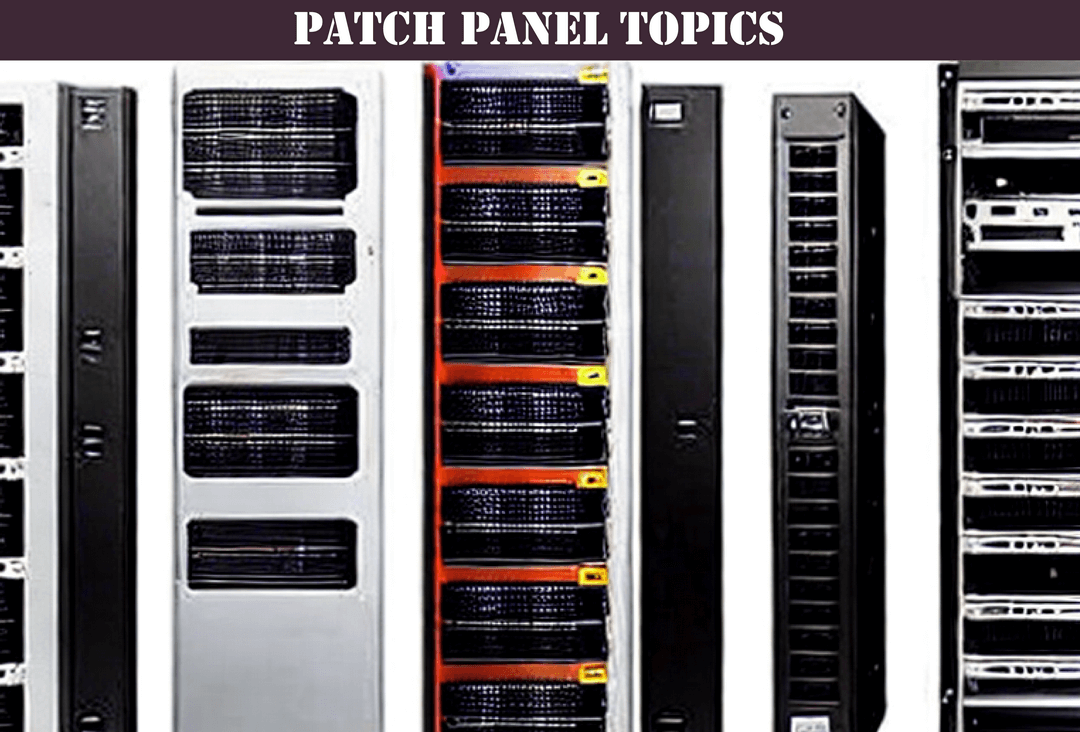Overview Of Patch Panels 2025

In modern network infrastructure, patch panels are an essential component for connecting and organizing network cables. They serve as a central point for connecting multiple devices and enable easy cable management and troubleshooting. Patch panels are available in different types, such as punch-down and modular patch panels, and understanding their fundamentals is crucial for maintaining reliable network performance.
Patch panels are essentially a set of ports on a panel that allow for connecting different network cables. The panel is typically mounted on a rack, and cables are connected to the panel's rear through punch-down or modular connectors. The front side of the panel features ports that allow for easy connection to network devices such as switches, routers, and servers.

1 Hour Consult $250
IT Glue Based Documentation
Concentrated 1 hour session of MSP documentation wisdom.
Count Me InPunch-down patch panels are commonly used in high-density installations and provide compatibility with different cable types, such as twisted pair and fiber optic cables. These panels use a punch-down tool to terminate cable wires and provide a secure connection. On the other hand, modular patch panels use modular connectors that can accommodate different types of connectors, such as RJ45, USB, and HDMI.
Patch panels play a significant role in creating structured cabling systems, which provide a standardized and organized approach to connecting and managing network cables. These systems allow for easy identification and tracing of cables, which simplifies troubleshooting and reduces downtime. Moreover, patch panels facilitate efficient network connectivity by providing a central location for connecting multiple devices, enabling easier network management and expansion.
In addition to understanding the types and functions of patch panels, proper installation and maintenance are also essential for ensuring reliable network performance. Installing a patch panel involves selecting the appropriate panel for the network, preparing the cables, and attaching the cables to the panel. Proper labeling of cables and regular maintenance checks for loose connections are also critical to ensure optimal performance.
Types of Patch Panels
Patch panels are available in different types, with the two most common types being punch-down and modular patch panels.
Punch-Down Patch Panels
Punch-down patch panels are the traditional type of patch panel, and they are commonly used in high-density installations. They are compatible with different cable types, such as twisted pair and fiber optic cables. Punch-down patch panels use a punch-down tool to terminate cable wires and provide a secure connection. These patch panels require minimal maintenance, and they are typically less expensive than modular patch panels.
Modular Patch Panels
Modular patch panels use modular connectors that can accommodate different types of connectors, such as RJ45, USB, and HDMI. These patch panels are easy to install and offer flexibility in accommodating different connectors. Modular patch panels are more expensive than punch-down patch panels but offer ease of use and scalability.
Functions of Patch Panels
Patch panels play a crucial role in creating structured cabling systems, which provide a standardized and organized approach to connecting and managing network cables.
Cable Management
Patch panels allow for easy cable management, as they provide a central location for connecting multiple devices. Cables can be easily traced and identified, making troubleshooting easier and reducing downtime. Proper labeling of cables and regular maintenance checks for loose connections are essential to ensure optimal performance.
Network Connectivity
Patch panels facilitate efficient network connectivity by providing a central location for connecting multiple devices. They enable easier network management and expansion, as adding or removing a device from the network only requires a simple patch cable change. Patch panels are also beneficial in reducing cable clutter and providing a neat and organized appearance to the network infrastructure.
Installation and Maintenance of Patch Panels
Proper installation and maintenance are essential for ensuring reliable network performance.
Installation
Installing a patch panel involves selecting the appropriate panel for the network, preparing the cables, and attaching the cables to the panel. Here are the steps involved in installing a patch panel:
- Determine the number of ports required and select the appropriate patch panel type and size.
- Prepare the cables by stripping the wires and arranging them in the desired sequence.
- Attach the cables to the rear of the patch panel using either punch-down or modular connectors.
- Label the cables for easy identification.
- Mount the patch panel on a rack or enclosure.
- Connect the patch cables to the front of the patch panel, and connect the other end of the patch cables to the network devices.
Maintenance
Regular maintenance of patch panels is essential for ensuring optimal network performance. Here are some tips for maintaining patch panels:
- Regularly check for loose connections and re-terminate cables as necessary.
- Ensure proper labeling of cables and keep an updated record of the network connections.
- Clean the patch panel and surrounding area to prevent dust buildup and potential damage to the network infrastructure.
- Periodically inspect the patch panel for any signs of wear or damage, and replace any faulty components immediately.
In conclusion, patch panels play a crucial role in creating structured cabling systems, providing a centralized location for connecting multiple devices, facilitating efficient network connectivity, and allowing for easy cable management and troubleshooting. While punch-down and modular patch panels are the most common types, modular patch panels offer more flexibility and ease of use, albeit at a higher cost. Proper installation and maintenance of patch panels are essential for ensuring reliable network performance, including regularly checking for loose connections, ensuring proper labeling of cables, and keeping an updated record of network connections. By following these guidelines, network administrators can ensure that their patch panels are functioning optimally and their networks are performing at their best.
FAQ
What is a patch panel used for?
A patch panel is used to create a structured cabling system, providing a centralized location for connecting multiple devices and facilitating efficient network connectivity. It also allows for easy cable management and troubleshooting.
What types of patch panels are available?
The two most common types of patch panels are punch-down and modular patch panels. Punch-down patch panels are the traditional type and are typically less expensive, while modular patch panels are more flexible and easier to use.
How do I install a patch panel?
To install a patch panel, select the appropriate panel for the network, prepare the cables, and attach the cables to the panel. Then, label the cables for easy identification, mount the patch panel on a rack or enclosure, and connect the patch cables to the front of the patch panel and the network devices.
How do I maintain a patch panel?
To maintain a patch panel, regularly check for loose connections and re-terminate cables as necessary, ensure proper labeling of cables, keep an updated record of network connections, clean the patch panel and surrounding area, and periodically inspect the patch panel for any signs of wear or damage.
What are some benefits of using patch panels?
Some benefits of using patch panels include easier cable management, efficient network connectivity, easier network management and expansion, reduced cable clutter, and a neat and organized appearance to the network infrastructure.